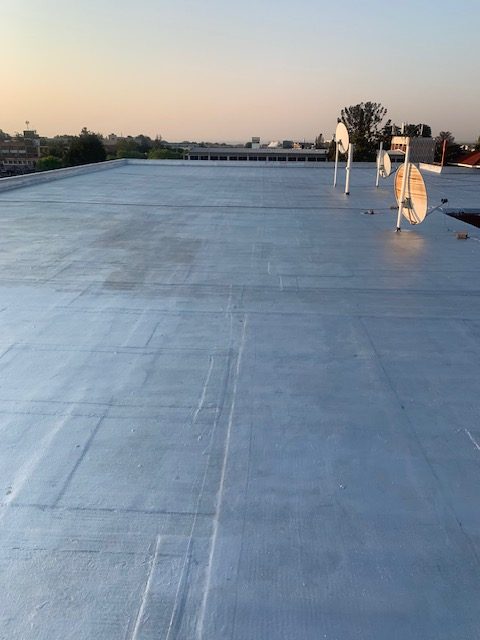A leaking roof is a homeowner’s nightmare. It can cause severe damage to your house if not handled promptly. Water stains on your ceiling, mold growth, or dripping during rainstorms are all signs of a leaky roof. Addressing the issue quickly is essential to avoid bigger problems down the line. Here’s a comprehensive guide on how to prevent roof leaks and fix them for good.
1. Prevention is Better Than Cure: Tips to Avoid Roof Leaks
While dealing with an existing leak can be stressful, preventing one is much easier and cost-effective. Here are some ways to safeguard your roof against leaks:
Regular Roof Inspections
Your roof faces the elements daily, and wear and tear are inevitable. Schedule bi-annual roof inspections (especially before and after heavy rainy or snowy seasons) to catch problems before they escalate. Look out for:
- Missing, broken, or curling shingles
- Cracked or worn sealant
- Debris blocking gutters and downspouts
- Rust or corrosion on metal components
Maintain Gutters and Downspouts
Clogged gutters are a common cause of roof leaks. When gutters can’t channel water away, it can overflow and pool on your roof, leading to leaks. Clean your gutters regularly, especially in the fall when leaves and debris tend to accumulate.
Trim Overhanging Trees
Tree branches hanging over your roof can cause damage during storms. The leaves and debris can clog gutters, and heavy branches can break off and puncture your roof. Regularly trimming trees near your home will reduce the risk of damage.
Ensure Proper Ventilation and Insulation
Good attic ventilation and insulation help prevent excess moisture from building up in your home. When your attic is too humid, it can cause condensation that may damage the roof structure, leading to leaks. Insulate your attic and ensure your vents are not blocked.
Check for Damaged Flashing
Roof flashing (the metal strips that cover roof joints) is particularly vulnerable to damage. Over time, it may crack or separate from the roof, leaving areas exposed to leaks. Inspect the flashing around chimneys, vents, skylights, and valleys.
2. How to Fix a Leaking Roof: A Permanent Solution
If you already have a roof leak, don’t panic! Here’s a step-by-step guide on how to fix the problem and ensure it doesn’t return:
Step 1: Identify the Source of the Leak
The first step to fixing a roof leak is finding its source. Water can travel a long distance from the entry point to the visible leak, so it’s crucial to thoroughly inspect your roof. Look for damaged or missing shingles, cracks, or other signs of wear. Inside your home, check for water stains, mold, or dampness.
Step 2: Temporary Fix for Immediate Relief
While waiting for professional help or preparing for a long-term fix, you can apply temporary measures to prevent further damage:
- Use a plastic tarp to cover the leaking area on the roof. Ensure it is secure and extends a few feet beyond the leak.
- Use roofing cement or silicone caulk to temporarily seal minor cracks or holes in the shingles.
- Inside, use buckets to catch the dripping water, and move furniture and valuables out of harm’s way.
Step 3: Repair Damaged Shingles or Flashing
Once you identify the problem area, it’s time to repair the damage:
- Shingles: For damaged or missing shingles, remove the old ones and replace them with new ones. Be sure to follow the manufacturer’s instructions to ensure they are properly secured.
- Flashing: If the flashing around chimneys or vents is the problem, remove the old flashing and apply a new one. Use roofing nails and cement to secure it tightly.
Step 4: Reseal and Waterproof
To prevent future leaks, it’s important to reseal and waterproof your roof. After you’ve replaced the damaged shingles or flashing, apply roofing cement or a waterproof sealant around the repaired area to ensure no water can penetrate.
Step 5: Hire a Professional for Larger Repairs
If the leak persists or you notice significant damage, it’s best to hire a professional roofing contractor. They have the expertise and equipment to repair larger problems and ensure your roof is structurally sound.
3. Upgrade for Long-Term Solutions
Sometimes, fixing a leaky roof requires more than just patching up individual areas. If your roof is old or has suffered extensive damage, consider the following long-term solutions:
Roof Replacement
If your roof is nearing the end of its lifespan (typically 20-30 years for asphalt shingles), a full roof replacement might be more cost-effective in the long run. Modern roofing materials are more durable and energy-efficient, offering better protection against leaks.
Upgrade Your Gutters
Consider installing seamless gutters or gutter guards to reduce the risk of blockages. Seamless gutters have fewer joints, meaning fewer places for debris to accumulate.
Install a Roof Coating
Roof coatings are an excellent way to protect your roof from the elements. These coatings can extend the life of your roof by adding an extra waterproof layer, reducing the risk of leaks and damage from UV rays.
4. Conclusion
A leaky roof can lead to costly repairs and potential health hazards from mold or mildew. By following the prevention tips and repairing existing damage promptly, you can protect your home and enjoy peace of mind. Remember, regular roof maintenance is the key to avoiding leaks, and when problems arise, addressing them swiftly will save you time and money in the long run.

